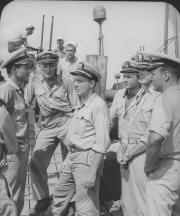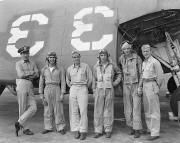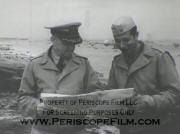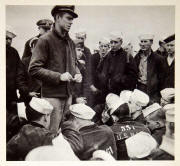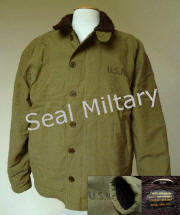| Khakis | ||
|
Alternatively,
Soldier Of Fortune stock a
Summer Service Chino Shirt which does not have shoulder straps as
it is sold as an enlisted-men's item. They also have the matching
Summer Service Chino Trousers to complete
the uniform. These would also seem to be ideal as a USN officer's khaki uniform
combination.
|
||
| Belt | ||
|
|
|
| Headdress | ||
|
Updated
|

|
The preferred headdress for USN officers in hot climates was the khaki cotton garrison cap (see left). The insignia on the left front of the cap was either a miniature copy of the standard cap badge (line officers) or, in the case of naval aviators, optionally a miniature copy of the naval aviator wings (see the Insignia section below). A shirt-collar-size rank badge is worn on the right side of the cap. The best source for the garrison cap is Soldier Of Fortune. They can also supply the correct size of cap badge for the garrison cap (see left), although original WW2 examples are readily available on ebay..
The US Army's equivalent to the garrison cap was their officer's linen
overseas cap. This was worn with miniature (shirt collar-sized) rank
insignia on the left front and no insignia on the right. In common with
all US officer's garrison or overseas caps, this has the standard black
and gold piping to denote officer status. The only source I know of for this cap is
What
Price Glory.
 |






